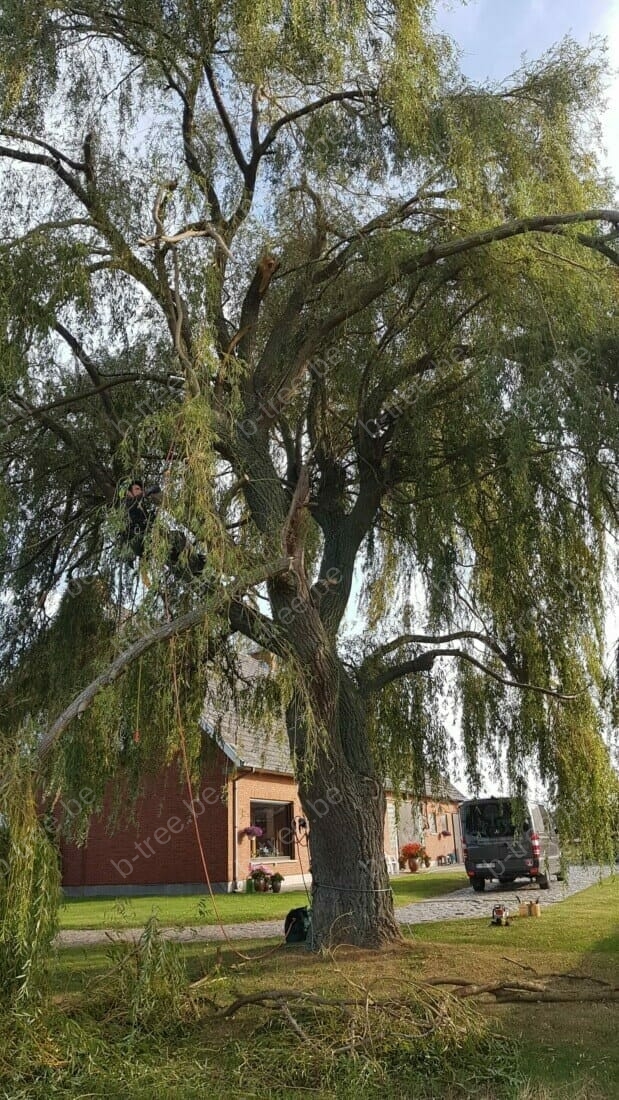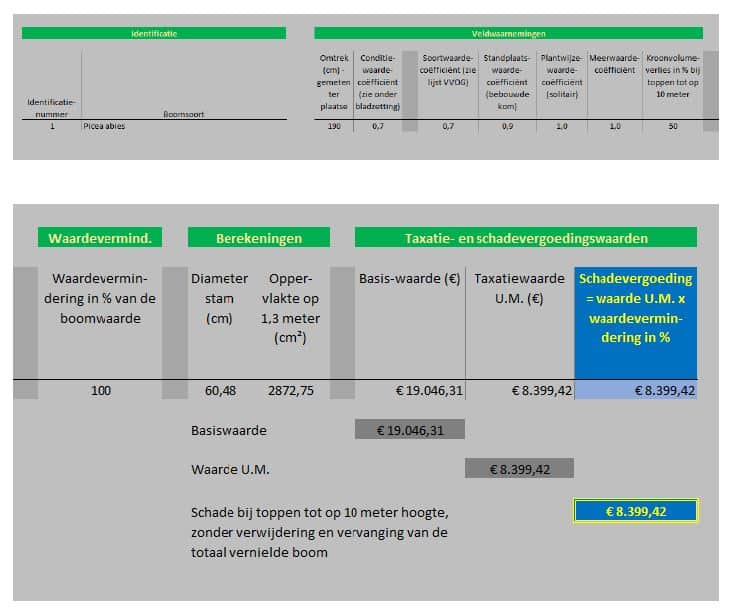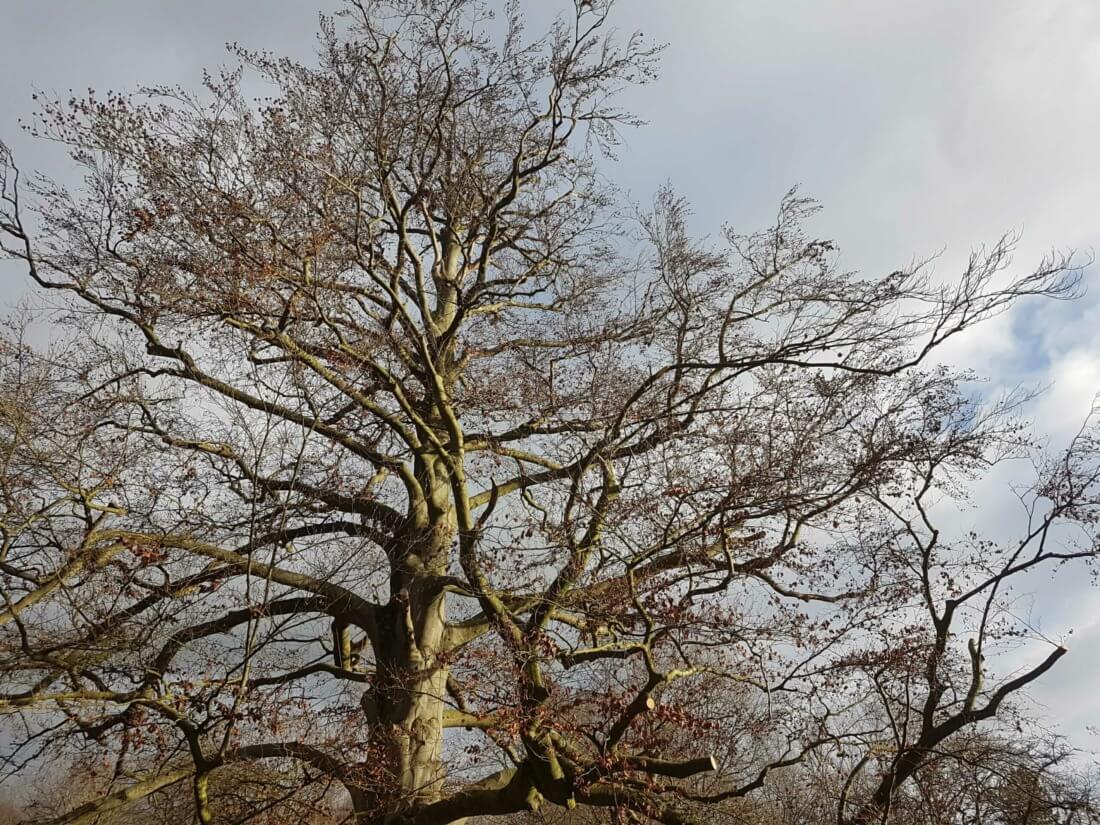
Pruning large trees
When pruning large, beautiful trees, take the crown architecture into account
Pruning large trees means that you take the crown architecture of the tree. This is determined by the tree itself and depends on the species and age. So you will when pruning big young one trees work differently to go than when pruning large old trees.
A young, large tree has a completely different stage of development crown architecture then an old tree.
A tree develops crown architecture better than anyone else. Much better than a human. That is why it is not always easy to do the right interventions if you are going to prune large trees.
For pruning large trees so there is a lot of knowledge about it crown architecture needed for trees.
In addition, pruning large trees is not that easy in terms of practical implementation. In itself it is not self-evident to reach the canopy in a safe manner while climbing 30 meters high. In addition, you also need to know what you should, may or may not do in that large crown. And when, at what time of the year, you can prune the trees. You have to work thoughtfully.
First and foremost, you will wonder whether the tree can be pruned. This depends on his condition off.
And why you would prune the big tree.
You will then determine a plan of action. Namely how you will prune the large tree and how you will manage the large tree over time from that moment on.
Can the tree be pruned?
A tree that is in good condition condition and vital is, can and may be pruned. Said it on it right moment.
Trees with a poor condition often do not need pruning, but they do need one growth site improvement. For example, it is not good to prune the tops of large trees if those branch parts have died. It's much better to investigate the reason for the dying branches is. And then, for example, an appropriate one growth site improvement if this is the solution.
Why is it important to ask yourself whether or not a large tree should be pruned? Perhaps first a small comment here; you have to ask yourself this for every tree, large or small. But a large tree often has a much greater value than a small tree. Both in terms of biodiversity and financially.
If you have a large tree appraises or has a valuation carried out, you can sometimes be shocked by how much the tree is worth. Large trees in a village center can themselves have a very high value. Up to tens of thousands of euros. If you were to prune such a large and valuable tree at a time when it could not cope with the pruning, the tree could die. Major financial damage has been caused. That is why you always have to know whether a tree can handle pruning or not.
Print screen of a tree valuation. Which can quickly amount to thousands of Euros.
It should also be noted that trees in urban areas, which have a good growth site design and/or well-thought-out growth site construction, often a very good one condition to have. Especially compared to these trees that have insufficient and difficult root space. These conditionally good trees can then be pruned whenever necessary. The others do not, and may need to be removed, which costs more money.
Why should you prune a large tree?
You do not need to prune a large specimen tree where there is no risk of branch breakage or environmental damage. This tree can grow to its maximum size. Whatever makes it the most beautiful.
There are of course reasons why you should or should prune a large tree:
- If there are overhanging branches that cause nuisance to neighbors. Here it is also better to prune too early than too late. Pruning small branches makes small pruning wounds. Which is much less bad for the big tree. The pruning wounds will heal faster. And therefore less chance of damage.
- Or when a branch is top-heavy, so that there is a risk of tearing out, resulting in a large trunk wound.
- Even if the tree is affected by a parasitic fungus and entire parts of the crown could tear out over time, pruning is often recommended. This is then a safety pruning.
- Or when branches have already been torn out in the crown of the large tree.
How do you prune large trees?
The basic rules for pruning an iconic tree are:
- Never prune away large or thick branches and prune on the outside of the crown.
- Do not prune more than 20% of the total leaf mass or crown in one pruning session.
- Do not prune every year, but allow the tree to return to its normal energy level before pruning again.
- Prune at the right time. For most trees this is during the growing season (spring and summer). For ABC trees this is always during the summer.
Some tree species require extra attention
Are you going to have a big one? beech pruning, or pruning a large lime or maple tree? Then take into account the smooth bark of these trees and their sensitivity to sunburn.
By exposing the crown too brightly in one pruning or by removing large branches, the sun can shine on branches or trunk parts that were previously not directly exposed to the sun's rays. This is possible sunburn to arise. As a result, the bark and it cambium (growth layer where cell division takes place, just under the bark) of trees damaged or “burnt” by the sun. If the cambium dies, the tree can no longer grow and the tree dies.
Crown reduction and lifting of the crown of a large old beech, carried out during the pruning of this large tree. Because the trunk will no longer be able to carry the heavy weight over time due to rotting. This means that the correct preventive action has been taken with pruning.
Sudden exposure of the beech, lime or maple trunk or large branches to direct sunlight, through pruning, can cause a lot of damage. And not only on the trunk, but also 30 meters high in the crown. Read more about it pruning a beech in our separate guide with more explanation and information about this.
When to prune a tree is also very important. Because some species can bleed. And you don't want that.
Prune overhanging or deeply sagging branches on large trees
If the branches of the tree sag too far and traffic can no longer flow properly, something has to be done. The lower branches of the tree are often shortened so that they are higher off the ground. They are shorter, but also lighter, so they no longer sag as deeply.
However, this shortening is not sufficient. If professional arborist we will also take and highlight part of the crown, just above these deeply sagging branches. This means that the lower branches of the tree receive more light than before. And because the growth of trees is controlled by auxin, a growth hormone produced in the leaf buds, the branches that receive more light will start to stretch. In other words, no longer sagging so deeply.
This method of pruning ensures that the problem of branches that droop too deeply is solved for a longer period of time. Because the branches are more likely to grow upwards instead of drooping.
Contact us today for an initial consultation or visit without obligation
If you are looking for one professional arborist or someone who can prune your large tree like the best for you, then b-Tree Tree Care is ready to help you. And you have come to the right place.
Please contact us today to discuss your needs, schedule an assessment or learn more about how we can best prune your large tree so you can enjoy it for years to come. Our dedicated team is ready to help you preserve your valuable trees and landscape heritage.


